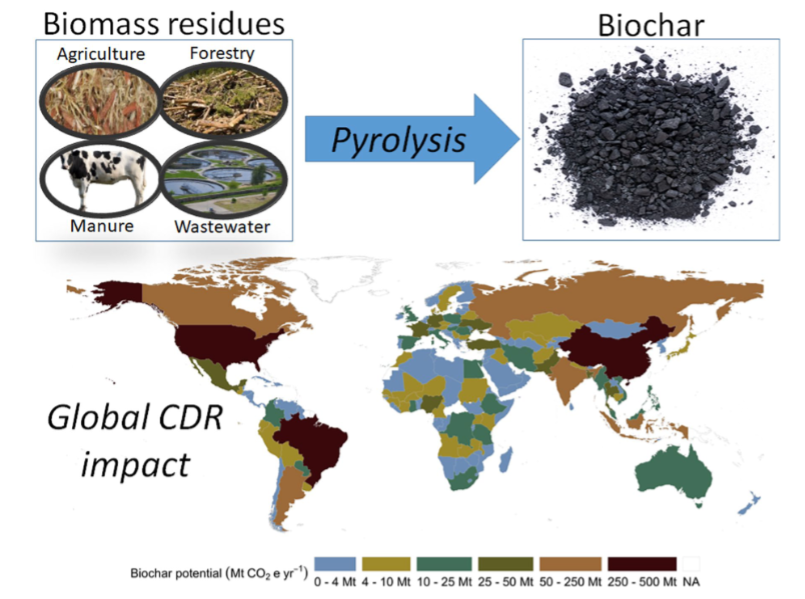Literature Review Series
Authored by Wil Burns, Co-Director, Institute for Carbon Removal Law & Policy, American University
There is growing interest in enhanced rock weathering (ERW) as a potentially important component of a carbon dioxide removal portfolio. Recent studies project that large-scale application of pulverized silicate rocks, such as olivine, basalt, or wollastonite, to croplands could effectuate atmospheric carbon dioxide removal of 0.5-4 gigatons annually by 2100. However, one of the most imposing barriers to scaling ERW as a climate response mechanism is the difficulty of monitoring and verifying carbon sequestration.
A new study in the journal Environmental Science & Technology tries to help address this issue. The study introduces a new tool to monitor and verify ERW sequestration. The approach seeks to measure differences in concentrations of ERW feedstock pre- and post-weathering by comparing concentrations of mineral-bound metal cations before and after feedstock deployment. More specifically, the approach, which is referred to as “TiCAT,” seeks to estimate the total loss of cations from the solid phase of soil samples vis-à-vis a titanium tracer. The researchers contend that this mass-balance approach can help us estimate the time-integrated amount of weathering of a silicate mineral, basalt in this study, within a given soil profile. The TiCAT approach was initially assessed through a laboratory mesocosm experiment that measured the concentration of reaction products in soils and leachate solution pools.
The researchers concluded that the TiCAT process accurately estimated initial CDR within the standard error or means of results from the more conventional method used to calculate weathering and initial CDR in mesocosm experiments. This suggests that “it can yield an accurate and robust estimate of initial CDR in enhanced weathering systems.” This could be a significant breakthrough, because prior methods of estimating ERW, especially those reliant on measuring quantities and transport of weathering reaction products, pose barriers to scaling given their time and labor intensiveness. Moreover, this approach could “directly integrate into existing agronomic practices,” as samples from the uppermost layer of soils are routinely taken for nutrient and soil pH analysis.
However, the authors of the study also proffer a number of caveats in terms of their findings, including the following:
-
- The estimates from this approach are only an initial value, subject to potential leakage of initially captured carbon as it’s transported an alkalinity and dissolved inorganic carbon from soil to the oceans;
- The variable lag time between feedstock dissolution and the capture of carbon dioxide needs to be taken into account in accurately assessing CDR;
- As a next step, it needs to be established the approach can scale weathering rates from discrete sampling points to larger systems;
- There may be site-specific conditions in some settings that would preclude accurate use of this approach, such as areas with high levels of physical erosion or where feedstocks with chemical conditions similar to those in the soils are applied.
As Mercer recently noted, robust monitoring, reporting and verification (MRV) of greenhouse gas removal approaches is a “market shaper” that can address a market failure that may preclude scaling of many options. Moreover, it’s critical to engender public acceptance and trust. While not as sexy as images of the construction of new CDR facilities, research of this nature needs to be front and center in our consideration.

